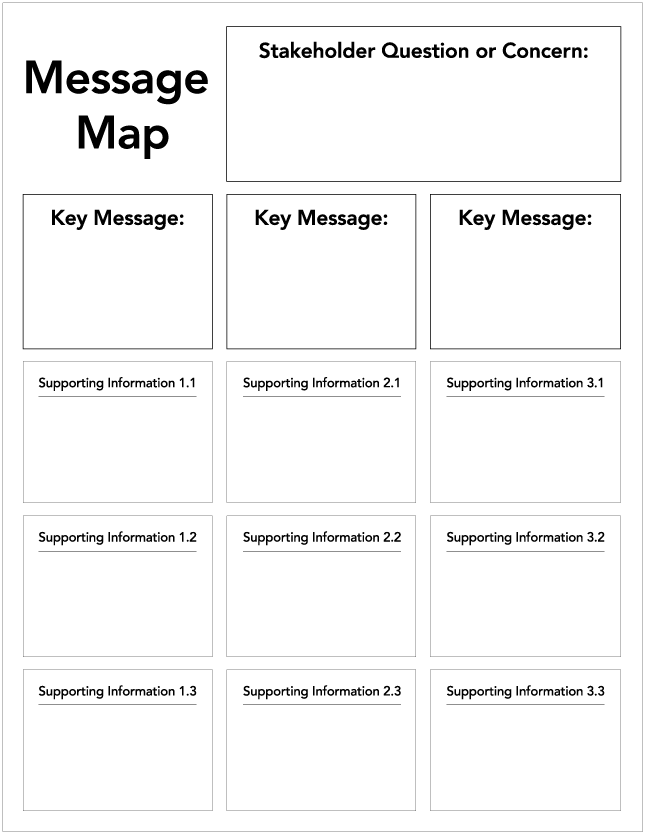Disaster Preparedness for Food Businesses: An Overview
Mississippi is home to many local food and agriculture-based businesses. Because the agriculture and food sectors can be subject to a variety of disasters, natural or manmade, disaster planning and preparedness is important. The goal of the MSU Extension Food as a Business: Disaster Preparedness for Food Businesses program is to help new and existing producers and processors identify and reduce potential risks associated with operating an agriculture-based food business.
Some examples of disasters for which food businesses should be financially prepared include severe thunderstorms, floods, hurricanes, tornadoes, earthquakes, fires, power outages, and technical interruptions. Additionally, chemical and biological threats, intentional contamination, and foodborne outbreaks may also severely impact food businesses. Some of these events are sudden, but others can be anticipated and their impacts mitigated or reduced. Disasters in agricultural and food sectors can affect buildings and infrastructures, machinery and equipment, animals, soil, crops, food products, and potentially consumers.
The Food as a Business: Disaster Preparedness for Food Businesses program provides information and resources on developing preparedness plans, including financial, succession, emergency action, food recall, food traceability, and crisis communication. Following is a list of considerations, resources, and contacts to help agriculture-based food businesses plan for or respond to disasters. This information is designed to help Mississippi food businesses mitigate risks so they can recover quickly after a disaster.
Financial Preparedness and Risk Management
Assessing financial readiness and being financially prepared before a crisis is critical. Being prepared may not eliminate damages, but it will reduce the impact and facilitate the recovery process. Disasters can interrupt operations and reduce revenues. And expenses may increase because of emergency response, reconstruction, or restoration needs. Beyond natural disasters, food safety incidents and recalls are costly and may impact future revenue because they impact consumers’ trust and the company’s reputation.
Remember that the cost of prevention is generally lower than the cost of dealing with an incident. Identifying potential risks and preparing for them is a good business practice. Consider the probability of a risk and its potential impacts. Below are some steps to help you assess your business’s financial preparedness and planning.
- Understand and assess potential risks and vulnerabilities.
Use the American Red Cross Ready Rating Hazard Vulnerability Assessment to prioritize your preparation efforts and/or the FEMA Flood Map to determine if you may be at risk of flooding.
Ask yourself what would happen in these scenarios:
- You cannot plant your crops, planting is delayed, or your crop is lost.
- Your inventory is lost/damaged.
- Your inventory is contaminated.
- Your building is not safe after an event (e.g., flood).
- Your paper records are destroyed.
- Your business computers are damaged.
- Your main supplier of inputs is no longer in operation.
- Internet, gas, power, or water services are interrupted.
- You have no or limited access to labor.
If any of these or other potential scenarios occurred, would you still be able to operate your business and generate income? Would you be able to meet your obligations (e.g., loan payments, payroll) if your income was interrupted? How long can you stay in business without income?
- Analyze your business and business structure.
Evaluate your income sources, variable and fixed costs, current indebtedness, infrastructure, and equipment. This could also help you identify insurance needs.
- Invest in mitigation projects as needed.
- Assess and review your insurance coverage annually.
- Ensure continuity of production and business operations by developing a business continuity plan.
Consider emergency funds, lines of credit, resources needed to operate, lines of management succession, important contacts (customers, suppliers, banks, etc.).
- Keep all important documentation in a secured location.
For example, loan documents, insurance policies, financial and legal documents, deeds and mortgages, etc.
- Identify sources of funding.
FEMA Financial Assistance
Small Business Administration Office of Disaster Assistance
USDA Farm Service Agency Emergency Farm Loans
Emergency Action Plan
During disasters, utilities may be disrupted, operations may cease, injuries may occur, and loss of inventory and property are likely. Of the imminent hazards, interruption of electrical service is likely to be the most common. What would you do if your business was without power for an extended time? Do you have access to an emergency generator with the capacity to supply energy for critical equipment? Are employees trained to operate that generator? Do you have access to a refrigerated truck or warehouse if your freezer or cooler does not work?
Also remember that you’ll need access to a usable phone in emergencies. Maintain current contact information for emergency services, employees, suppliers, distributors, and others. Are you prepared for other disasters such as fires, floods, and wind events?
An emergency action plan ensures a coordinated response to a potential or confirmed risk to your business operations and/or public health. Having a plan in place will reduce the number of “in-the-moment” decisions you need to make and increase your response time.
An emergency action team can help you carry out your emergency action plan. Below are steps the team should take when developing and carrying out the plan.
- Develop a planning group.
Consider representatives from multiple areas of your business. For larger operations, this could include management, quality assurance, production, maintenance, and sanitation.
- Planning group responsibilities include:
- Designate a person or people to be in charge of adverse event management.
- Create building and site maps that show locations of critical utilities, cut-off valves, and emergency routes.
- Identify equipment that is essential to keep the business open.
- Train employees on what to do in the case of a shutdown.
- Identify and list suppliers, shippers, resources, and other businesses with which you interact frequently.
- Develop professional relationships with other suppliers in case a supplier cannot provide materials.
- Develop an actionable plan for each type of event (severe weather, biosecurity, flooding, fire, etc.). Steps include:
- Note the date and time of the event.
- Implement the emergency action plan.
- Assess the affected operations.
- Immediately report the event to your regulatory authority.
- Follow emergency procedures if approved by your regulatory authority, or remain closed until granted approval to reopen.
- Immediately discontinue operation if safety cannot be maintained using an alternative procedure.
- Respond according to local, state, and federal laws.
- Update the plan regularly.
Food Recall and Traceability
A recall is the voluntary or mandatory action of removing a product from retail or distribution because of biological, chemical, or physical hazards. Food recalls may occur during disasters if steps are not taken to ensure food safety. The United States Department of Agriculture (USDA) and the Food and Drug Administration (FDA) are the federal regulatory entities that oversee and have authority to require a recall. Additionally, state regulatory entities (state health and/or agriculture departments) may discontinue operations if a significant food safety threat occurs.
While developing a Hazard Analysis and Critical Control Point (HACCP) or Hazard Analysis and Risk-Based Preventive Controls (HARPC) plan is not required for all food operations, it is a useful tool to evaluate potential hazards and determine preventive steps to reduce risks. Additionally, small processors/entities, restaurants, and other food-based businesses are encouraged to assess vulnerabilities from disasters (natural and manmade), food defense parameters, food recall plans, and food traceability throughout the supply chain.
Follow these steps to prepare for a food recall:
- Select a recall coordinator and build a recall team.
- Determine the methods for traceability, both forward and backward, and write procedures necessary to locate products from either avenue.
- Pre-write all necessary forms for the media, customers, etc., in preparation for interacting with the public.
- Contact a third-party expert or process authority to evaluate your recall plan for completeness and effectiveness.
- Conduct periodic mock recalls and modify your plan based on areas that need improvement.
In the event of a recall, traceability enables businesses to remove contaminated or adulterated food products from distribution to prevent or reduce illness. Traceability can relate to origin of supplies and ingredients, processing history, shipping/distribution, and location of the product after delivery. Effective recordkeeping is essential and includes identifying all products and where they were produced or manufactured, usually through product coding. Having a comprehensive product-tracing system for the USDA, FDA, and food companies to follow will boost consumer confidence and minimize productivity losses.
In the event of an outbreak, immediately hold all suspect products to prevent further illness. Pull source and distribution information and prepare for a recall. Test ingredients and product samples. Begin recall procedures and immediately notify authorities, suppliers, distributors, and consumers.
Crisis Communication
Crisis or risk communication is an interactive process of exchanging information and opinions among individuals, groups, and institutions (Carvello, 2005). Crisis situations may produce stress and emotion, which can reduce consumers’ ability to process information by up to 80 percent. When people are stressed, they tend to focus more on negative information than positive.
Crisis communication is most effective when you provide people with a sense of hope, self- and community efficacy, safety, calm, and connectedness. The “rule of threes” suggests communicating three key messages, repeating them three times, and supporting them with three credible sources. Moreover, the key to risk
communication success is anticipation, preparation, and practice. Risk communication templates and message maps (Figure 1) are great ways to plan out and practice communication strategies for various scenarios. Also see MSU Extension Publication 3498 Preparing to Respond: Four Steps to Developing a Crisis Communication Plan.
It is important to plan in advance and prepare emergency written communication plans so that your designated spokesperson can communicate calmly, compassionately, and confidently. Preparing communication strategies ahead of time reduces last-minute decision-making and stress, and it allows you to respond quickly and effectively during an emergency. When preparing crisis communication documents, consider these questions:
- What needs to be done to mitigate the risk, emergency, or unforeseen event?
- Who needs to know (clients, suppliers, consumers, regulatory agencies, or media)?
- Who is the company spokesperson?
- Who needs to act to mitigate the disaster or unforeseen event?

Resources
MSU Extension Service
Financial Preparedness and Risk Management
American Red Cross Hazard and Vulnerability Assessment
Elizabeth Canales, Assistant Professor, Department of Agricultural Economics dec249@msstate.edu
Food Safety, Emergency Action Plan for Food Business, Food Recalls, Food Traceability
Food and Drug Administration. Food Defense and Emergency Response for Retail Food.
Conference for Food Protection. Emergency Action Plan for Retail Food Establishments, Second Edition
United States Department of Agriculture – Food Safety and Inspection Service (USDA-FSIS). How to Develop a Meat and Poultry Product Recall Plan.
Pennsylvania State University Extension. ReadyAG Workbook.
J. Byron Williams, Associate Extension Professor, Central Mississippi Research and Extension Center b.williams@msstate.edu
Courtney Crist, Assistant Extension Professor, Department of Food Science, Nutrition, and Health Promotion cac400@msstate.edu
Crisis Communication
Covello, V. T. (2005). Risk communication in environmental health: From local to global (H. Frumkin, Ed.). New York: Jossey Bass/John Wiley and Sons, Inc.
Covello, V. T., & Allen, F. (1988). Seven cardinal rules of risk communication. U.S. Environmental Protection Agency. Office of Policy Analysis, Washington, DC.
Morrison, C. C., Crist, C. A., Canales, E., & Williams, J. B. (2020). Preparing to respond: Four steps to developing a crisis communication plan. Mississippi State University Extension Service Publication 3498.
Whaling, H. (2010, April 12). 5 steps to develop a crisis communication plan. prTini.
Carley Morrison, Assistant Professor, School of Human Sciences carley.c.morrison@msstate.edu
This material is based upon work supported by USDA/NIFA under Award Number 2018-70027-28585.
Publication 3497 (09-23)
By Courtney A. Crist, PhD, Assistant Extension Professor, Food Science, Nutrition, and Health Promotion; J. Byron Williams, PhD, Associate Extension Professor, Food Science, Nutrition, and Health Promotion; Elizabeth Canales, PhD, Assistant Professor, Agricultural Economics; Carley C. Morrison, PhD, Assistant Professor, Human Sciences; and Eva McCormick, Undergraduate Extension Assistant.
The Mississippi State University Extension Service is working to ensure all web content is accessible to all users. If you need assistance accessing any of our content, please email the webteam or call 662-325-2262.






